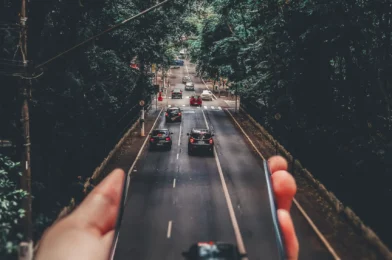Introduction
In an era where smartphones are an extension of our daily lives, the art of smartphone photography has gained immense popularity. Whether you’re a photography enthusiast or just someone who loves capturing moments, mastering smartphone photography can take your visual storytelling to new heights.
Understanding Your Smartphone Camera
To unlock the full potential of smartphone photography, begin by understanding your device’s camera capabilities. Explore the settings, modes, and features available. Don’t believe the myth that having more megapixels always results in better photos; instead, focus on how you use the features at your disposal.
Mastering Composition Techniques
Composition is key to creating visually appealing photographs. Familiarise yourself with the rule of thirds, a fundamental principle in photography. Experiment with framing and leading lines to guide the viewer’s eyes and create compelling compositions.
Optimising Lighting Conditions
Lighting can make or break a photo. Embrace natural light whenever possible, and be mindful of shadows and highlights. Learn to adapt to different lighting conditions, whether it’s the soft glow of sunrise or the warm hues of sunset.
Utilising Smartphone Camera Apps
While default camera apps are capable, third-party camera apps offer additional features and customisation options. Experiment with different apps to find the one that suits your style and preferences.
Exploring Different Shooting Modes
Smartphones come equipped with various shooting modes, like portrait, panorama, and night mode. Understand when and how to use these modes to capture diverse and stunning photos in different scenarios.
Effective Use of Editing Apps
Photo editing is a crucial step in smartphone photography. Explore editing apps to enhance colours, adjust brightness, and add creative effects. Remember, subtlety often produces the best results.
Mastering Macro Photography on Smartphones
Capture the intricate details of the world around you by exploring macro photography on your smartphone. Use the autofocus feature and experiment with manual focus for close-up shots that reveal a new perspective.
Capturing Motion and Action Shots
From a playful pet to a bustling city street, smartphones can capture dynamic motion. Explore techniques such as burst mode and adjust the shutter speed to freeze or blur motion for compelling action shots.
Creative Use of Depth of Field
Achieve that professional look by understanding and manipulating the depth of field on your smartphone. Create a blurred background effect to make your subject stand out.
Exploring Night Photography with Smartphones
Low-light conditions present challenges, but they also offer opportunities for creative night photography. Experiment with night mode and long exposure techniques to capture stunning shots after the sun sets.
Optimising Storage and Organisation
With the abundance of photos, managing storage becomes crucial. Utilise cloud storage options and regularly organise your photo library to keep it clutter-free.
Choosing the Right Accessories
Enhance your smartphone photography with accessories like tripods and additional lenses. These tools can improve stability and offer new perspectives, elevating the quality of your shots.
Experimenting with Perspectives
Don’t be afraid to explore different angles and perspectives. Get low, go high, or try a bird’s-eye view to add variety and uniqueness to your photos.
Showcasing Your Smartphone Photography
Share your creations with the world. Utilise social media platforms and photography communities to showcase your work. Build an online portfolio to document your photographic journey and connect with fellow enthusiasts.
FAQs (Frequently Asked Questions)
- Do I need a high-megapixel camera for good smartphone photography?
- Not necessarily. While megapixels are important, factors like sensor quality and image processing also play a significant role.
- How can I improve my composition skills in smartphone photography?
- Practice the rule of thirds, experiment with framing, and study compositions in photography tutorials or books.
- Are third-party camera apps better than the default ones?
- It depends on personal preference. Some photographers prefer the additional features and customisation options offered by third-party apps.
- What’s the best way to manage storage for smartphone photos?
- Utilise cloud storage services and regularly organise your photo library by creating folders or albums.
- Can I achieve professional-looking photos with just a smartphone?
- Absolutely. With the right techniques, an understanding of your phone’s features, and a creative eye, you can capture stunning and professional-quality photos.
